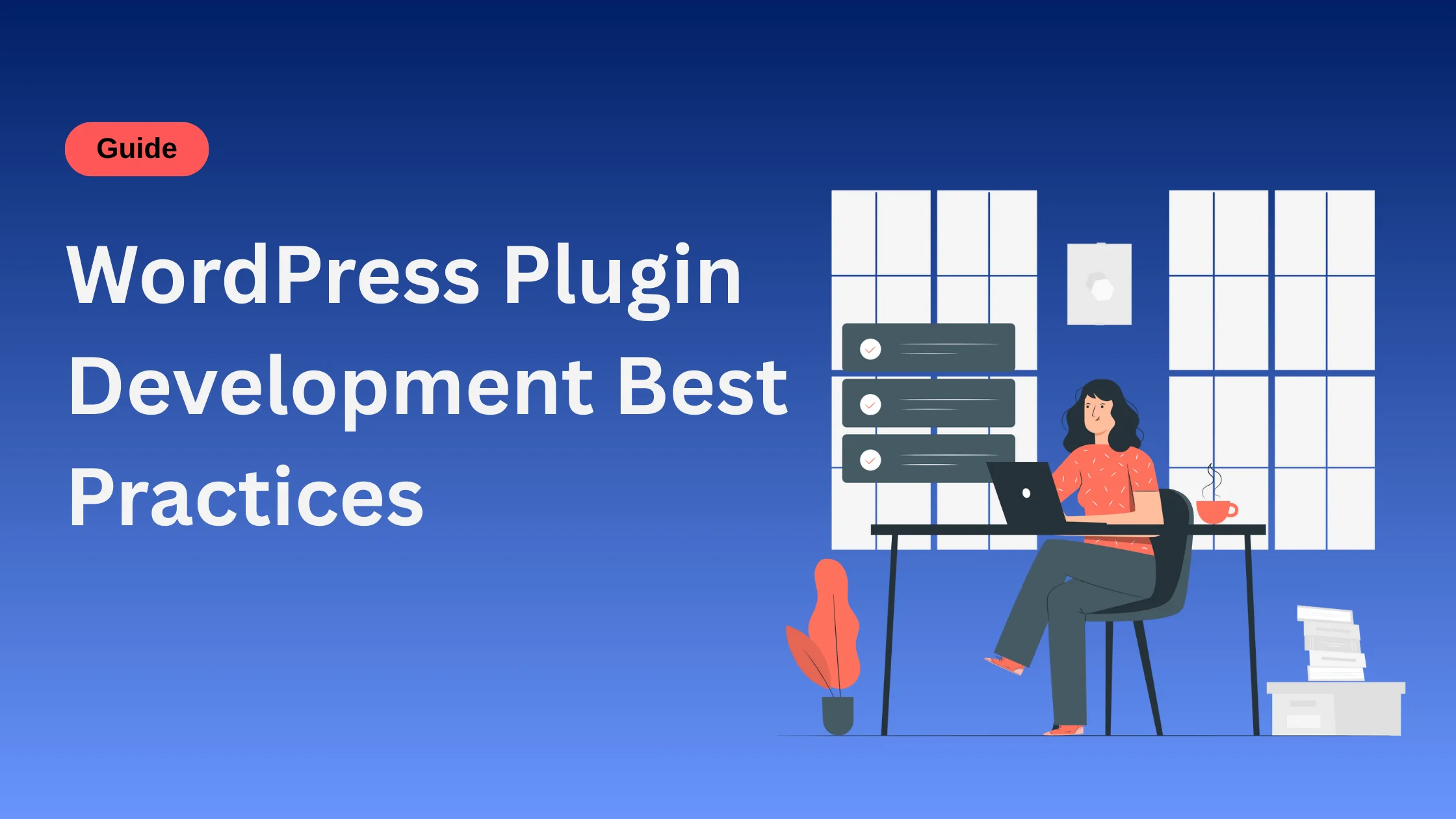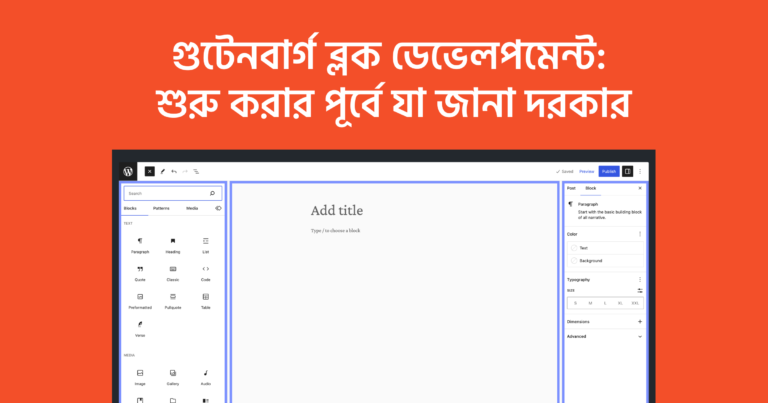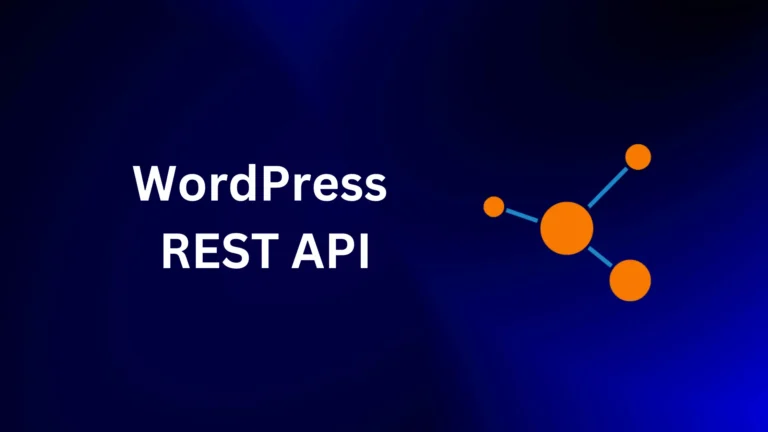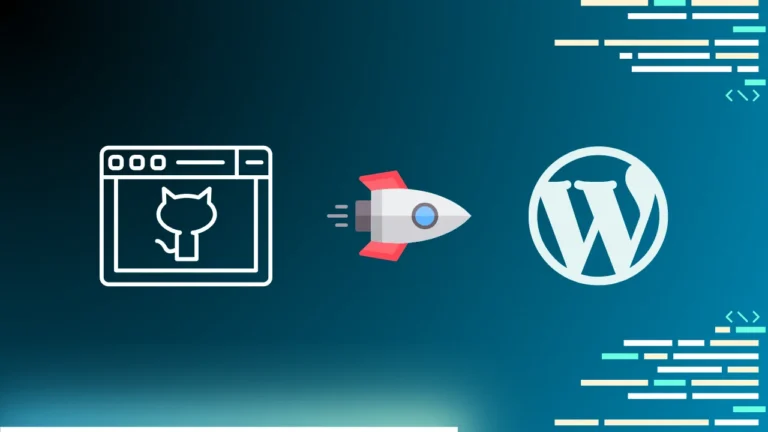WordPress Plugin Development Best Practices 2025: Complete Security Guide
WordPress continues to dominate the web, now powering 43.4% of all websites as of September 2025. With plugin submissions growing by 87% in 2025 and over 65,000 plugins available in the repository, the competition for plugin developers has intensified significantly.
Creating a successful WordPress plugin requires more than basic coding skills. It demands adherence to strict development standards, security protocols, and user experience principles. This comprehensive guide outlines 18 essential best practices that will help you build secure, scalable, and market-ready WordPress plugins that stand out in today’s competitive landscape.
Understanding the WordPress Plugin Ecosystem in 2025
The WordPress ecosystem has experienced unprecedented growth, with 34,342,409 live sites currently using WordPress. This massive user base presents both tremendous opportunities and significant responsibilities for plugin developers.
The WordPress.org review team maintains rigorous standards to ensure plugin quality and security. Understanding these requirements before development begins can save countless hours of revision and resubmission. The review process now incorporates automated security scanning, code quality analysis, and compliance verification against the latest WordPress coding standards.
Key Development Stages Overview
Before diving into best practices, it’s essential to understand the structured approach to WordPress plugin development:
- Market Research and Validation: Identify genuine user needs and market gaps
- Strategic Planning: Define unique value propositions and core features
- Technical Architecture: Design scalable, maintainable code structures
- Security Implementation: Integrate security measures from the ground up
- Testing and Quality Assurance: Comprehensive testing across environments
- Documentation and Compliance: Prepare for WordPress.org submission
- Launch and Post-Launch Support: Deploy and maintain your plugin
18 Essential WordPress Plugin Development Best Practices
1. Conduct Thorough Market Research and Competitive Analysis
Before writing a single line of code, invest significant time in market research. Analyze existing plugins in your category, identify feature gaps, and understand user pain points through forums, reviews, and support tickets.
Create user personas and map their journey to understand how your plugin will fit into their workflow. This research phase should inform every subsequent development decision, from feature prioritization to user interface design.
2. Establish a Comprehensive Development Strategy
Develop a clear roadmap that outlines your plugin’s unique selling proposition, target audience, feature set, and long-term vision. Your strategy should address:
- Core functionality: What problems does your plugin solve uniquely?
- User experience: How will users interact with your plugin?
- Integration points: Which other plugins or services will you support?
- Monetization model: How will you sustain development costs?
- Support infrastructure: How will you handle user inquiries and issues?
3. Adhere Strictly to WordPress Coding Standards
WordPress maintains comprehensive coding standards for PHP, JavaScript, CSS, and HTML. These standards ensure code consistency, readability, and maintainability across the global WordPress community.
Key areas of focus include:
- PHP Code Standards: Follow PSR-12 compatible formatting with WordPress-specific modifications
- JavaScript Standards: Use modern ES6+ syntax with proper linting
- CSS Guidelines: Implement consistent naming conventions and responsive design principles
- HTML Best Practices: Ensure semantic markup and accessibility compliance
Use automated tools like PHP_CodeSniffer with WordPress rules to validate your code continuously during development.
4. Implement Robust Namespacing and Avoid Conflicts
With thousands of plugins potentially installed on a single WordPress site, namespace conflicts pose significant risks. Implement comprehensive prefixing strategies:
For Functions and Variables:
// Good: Prefixed function name
function my_awesome_plugin_process_data() { }
// Good: Prefixed variable
$my_awesome_plugin_settings = array();
// Bad: Generic naming
function process_data() { }
$settings = array();
For Classes:
// Good: Namespaced class
namespace My_Awesome_Plugin;
class Data_Processor { }
// Good: Prefixed class name
class My_Awesome_Plugin_Data_Processor { }
For Database Tables and Options:
// Good: Prefixed database operations
$table_name = $wpdb->prefix . 'my_awesome_plugin_data';
update_option('my_awesome_plugin_settings', $settings);
5. Prioritize Security at Every Development Stage
Security should be integrated into every aspect of your plugin development, not added as an afterthought. Modern WordPress security follows OWASP Top 10 compliance standards and requires comprehensive input validation, output sanitization, and access control.
Essential Security Measures:
- Input Sanitization: Use
sanitize_text_field(),sanitize_email(), and other WordPress sanitization functions - Output Escaping: Implement
esc_html(),esc_url(),esc_attr()for all dynamic content - SQL Injection Prevention: Always use
$wpdb->prepare()for database queries - CSRF Protection: Implement nonces for all form submissions and sensitive actions
- Capability Checks: Verify user permissions before executing privileged operations
Advanced Security Implementation:
// Comprehensive nonce verification
if (!wp_verify_nonce($_POST['my_awesome_plugin_nonce'], 'my_awesome_plugin_action')) {
wp_die(__('Security check failed', 'my-awesome-plugin'));
}
// Capability verification
if (!current_user_can('manage_options')) {
wp_die(__('Insufficient permissions', 'my-awesome-plugin'));
}
// Sanitized input processing
$user_input = sanitize_text_field($_POST['user_data']);
$processed_data = $wpdb->prepare(
"INSERT INTO {$table_name} (data) VALUES (%s)",
$user_input
);
6. Utilize WordPress Nonces Effectively
Nonces (Numbers Used Once) provide crucial protection against cross-site request forgery (CSRF) attacks. Implement nonces for all administrative actions, form submissions, and AJAX requests.
Comprehensive Nonce Implementation:
// Generate nonce for forms
wp_nonce_field('my_plugin_action', 'my_plugin_nonce');
// Verify nonce on submission
if (!wp_verify_nonce($_POST['my_plugin_nonce'], 'my_plugin_action')) {
return new WP_Error('invalid_nonce', 'Security verification failed');
}
// AJAX nonce handling
wp_localize_script('my-plugin-ajax', 'my_plugin_ajax', array(
'ajax_url' => admin_url('admin-ajax.php'),
'nonce' => wp_create_nonce('my_plugin_ajax_nonce')
));
7. Leverage Modern Boilerplate and Framework Solutions
Starting with a proven boilerplate accelerates development while ensuring adherence to best practices. The WordPress Plugin Boilerplate provides a solid foundation with:
- Organized file structure and naming conventions
- Proper class autoloading and namespace management
- Admin and public-facing component separation
- Internationalization readiness
- Standard hooks and filter implementation
Consider modern alternatives like:
- Wppb.me: Web-based boilerplate generator
- WordPress Plugin Framework: Advanced object-oriented structure
- Custom Post Type UI Builder: For content-focused plugins
8. Enable and Utilize WP_DEBUG During Development
WordPress debugging capabilities have expanded significantly, offering granular control over error reporting and logging. Configure comprehensive debugging in your development environment:
// wp-config.php development settings
define('WP_DEBUG', true);
define('WP_DEBUG_LOG', true);
define('WP_DEBUG_DISPLAY', false);
define('SCRIPT_DEBUG', true);
define('SAVEQUERIES', true);
// Advanced debugging options
define('WP_DEBUG_LOG_ERRORS', true);
define('WP_DEBUG_LOG_QUERIES', true);
define('WP_DEBUG_LOG_DEPRECATED', true);
Implement custom logging for complex debugging scenarios:
// Custom debug logging
if (defined('WP_DEBUG') && WP_DEBUG) {
error_log('My Plugin Debug: ' . print_r($debug_data, true));
}
// Conditional debugging based on user role
if (current_user_can('administrator') && WP_DEBUG) {
echo '<!-- Debug info: ' . esc_html($debug_message) . ' -->';
}
9. Maintain Organized and Scalable File Structure
A well-organized file structure enhances maintainability, facilitates team collaboration, and simplifies debugging. Implement a comprehensive directory structure:
/my-awesome-plugin/
├── my-awesome-plugin.php (Main plugin file)
├── uninstall.php (Uninstallation cleanup)
├── readme.txt (WordPress.org documentation)
├── README.md (Development documentation)
├── /admin/ (Administrative interface)
│ ├── /css/
│ ├── /js/
│ ├── /partials/
│ └── class-admin.php
├── /public/ (Public-facing functionality)
│ ├── /css/
│ ├── /js/
│ ├── /partials/
│ └── class-public.php
├── /includes/ (Core plugin logic)
│ ├── class-activator.php
│ ├── class-deactivator.php
│ ├── class-loader.php
│ └── class-i18n.php
├── /languages/ (Translation files)
├── /assets/ (Images, icons, media)
├── /tests/ (Unit and integration tests)
├── /vendor/ (Composer dependencies)
└── composer.json (Dependency management)
10. Create Comprehensive Documentation with readme.txt
The readme.txt file serves as your plugin’s first impression and primary documentation. WordPress.org requires specific formatting and comprehensive information:
Essential readme.txt Sections:
=== My Awesome Plugin ===
Contributors: yourusername
Tags: functionality, feature, solution
Requires at least: 6.0
Tested up to: 6.4
Requires PHP: 8.0
Stable tag: 1.0.0
License: GPLv2 or later
License URI: https://www.gnu.org/licenses/gpl-2.0.html
Brief, compelling description under 150 characters.
== Description ==
Comprehensive plugin description with features, benefits, and use cases.
== Installation ==
Step-by-step installation and setup instructions.
== Frequently Asked Questions ==
Common questions and detailed answers.
== Screenshots ==
1. Screenshot description
2. Another screenshot description
== Changelog ==
= 1.0.0 =
* Initial release with core functionality
11. Implement Comprehensive Internationalization (i18n)
With WordPress powering websites globally, internationalization is crucial for plugin success. Implement thorough i18n support from the beginning:
Text Domain Setup:
// Load text domain in main plugin file
load_plugin_textdomain('my-awesome-plugin', false, dirname(plugin_basename(__FILE__)) . '/languages');
// Use consistent text domain throughout
__('Hello World', 'my-awesome-plugin');
_e('Display directly', 'my-awesome-plugin');
printf(__('Welcome %s', 'my-awesome-plugin'), $user_name);
Translation Best Practices:
- Use descriptive context with
_x()function for ambiguous strings - Implement proper plural forms with
_n()function - Provide translator comments for complex strings
- Generate POT files for translator distribution
- Test with different language packs
12. Optimize Performance and Resource Management
Modern WordPress sites demand optimal performance. Implement efficient resource management strategies:
Conditional Loading:
// Load admin scripts only in admin area
if (is_admin()) {
wp_enqueue_script('my-plugin-admin', plugin_dir_url(__FILE__) . 'admin/js/admin.js');
}
// Page-specific resource loading
if (is_singular() && has_shortcode(get_post()->post_content, 'my_shortcode')) {
wp_enqueue_style('my-plugin-shortcode', plugin_dir_url(__FILE__) . 'public/css/shortcode.css');
}
Database Query Optimization:
// Use transients for expensive operations
$cached_data = get_transient('my_plugin_cached_data');
if (false === $cached_data) {
$cached_data = expensive_database_operation();
set_transient('my_plugin_cached_data', $cached_data, HOUR_IN_SECONDS);
}
// Implement proper database indexing
$wpdb->query("CREATE INDEX idx_my_plugin_field ON {$table_name} (field_name)");
13. Implement Comprehensive Testing Strategies
Modern plugin development requires systematic testing approaches. Implement multiple testing layers:
Unit Testing with PHPUnit:
// Basic unit test structure
class MyPluginTest extends WP_UnitTestCase {
public function test_plugin_activation() {
$this->assertTrue(is_plugin_active('my-awesome-plugin/my-awesome-plugin.php'));
}
public function test_data_processing() {
$input = 'test data';
$result = my_plugin_process_data($input);
$this->assertEquals('expected output', $result);
}
}
Integration Testing:
- Test plugin functionality with popular plugins (WooCommerce, Yoast SEO, etc.)
- Verify compatibility across different themes
- Test performance under various load conditions
Security Testing:
- Use Plugin Check for automated security scanning
- Implement manual penetration testing
- Verify OWASP Top 10 compliance
14. Establish Proper Version Control and Release Management
Implement systematic version control and release processes:
Semantic Versioning:
- Major.Minor.Patch format (e.g., 2.1.3)
- Major: Breaking changes or significant feature additions
- Minor: New features without breaking changes
- Patch: Bug fixes and minor improvements
Git Workflow Best Practices:
# Feature branch workflow
git checkout -b feature/new-functionality
git commit -m "feat: add advanced data processing"
git checkout main
git merge feature/new-functionality
git tag -a v1.2.0 -m "Release version 1.2.0"
15. Implement Advanced Security Measures
Beyond basic sanitization, implement enterprise-grade security measures:
Content Security Policy (CSP):
// Implement CSP headers for admin pages
function my_plugin_add_csp_header() {
if (is_admin()) {
header("Content-Security-Policy: default-src 'self'; script-src 'self' 'unsafe-inline'");
}
}
add_action('admin_init', 'my_plugin_add_csp_header');
Rate Limiting:
// Implement API rate limiting
function my_plugin_check_rate_limit($user_id) {
$key = 'my_plugin_rate_limit_' . $user_id;
$count = get_transient($key);
if ($count >= 100) { // 100 requests per hour
return new WP_Error('rate_limit_exceeded', 'Too many requests');
}
set_transient($key, ($count + 1), HOUR_IN_SECONDS);
return true;
}
Data Encryption:
// Encrypt sensitive data before storage
function my_plugin_encrypt_data($data) {
if (function_exists('openssl_encrypt')) {
$key = wp_salt('auth');
return openssl_encrypt($data, 'AES-256-CBC', $key, 0, substr($key, 0, 16));
}
return $data; // Fallback for environments without OpenSSL
}
16. Create Intuitive User Interfaces and Experiences
Modern WordPress users expect intuitive, responsive interfaces that integrate seamlessly with the WordPress admin experience:
Admin Interface Best Practices:
// Follow WordPress admin UI patterns
function my_plugin_admin_page() {
?>
<div class="wrap">
<h1><?php echo esc_html(get_admin_page_title()); ?></h1>
<div class="notice notice-info">
<p><?php _e('Welcome to My Awesome Plugin settings!', 'my-awesome-plugin'); ?></p>
</div>
<form method="post" action="options.php">
<?php
settings_fields('my_plugin_settings');
do_settings_sections('my_plugin_settings');
submit_button();
?>
</form>
</div>
<?php
}
Responsive Design Implementation:
- Use WordPress admin color schemes and typography
- Implement mobile-responsive layouts
- Provide contextual help and tooltips
- Follow accessibility guidelines (WCAG 2.1)
17. Plan for Scalability and Future Growth
Design your plugin architecture to accommodate future feature additions and increased load:
Modular Architecture:
// Implement plugin modules for scalability
abstract class My_Plugin_Module {
abstract public function init();
abstract public function get_dependencies();
}
class My_Plugin_Email_Module extends My_Plugin_Module {
public function init() {
add_action('my_plugin_send_notification', array($this, 'send_email'));
}
public function get_dependencies() {
return array('wp_mail');
}
}
// Module manager
class My_Plugin_Module_Manager {
private $modules = array();
public function register_module($module) {
if ($this->check_dependencies($module)) {
$this->modules[] = $module;
$module->init();
}
}
}
Database Schema Versioning:
// Implement database migration system
function my_plugin_check_database_version() {
$current_version = get_option('my_plugin_db_version', '1.0');
$latest_version = '1.2';
if (version_compare($current_version, $latest_version, '<')) {
my_plugin_run_database_migrations($current_version, $latest_version);
update_option('my_plugin_db_version', $latest_version);
}
}
18. Establish Comprehensive Documentation and Support Systems
Professional plugin development requires thorough documentation and support infrastructure:
Developer Documentation:
- Code comments following PHPDoc standards
- API reference documentation
- Integration guides and examples
- Contributing guidelines for open source projects
User Documentation:
- Getting started guides
- Feature tutorials with screenshots
- Troubleshooting sections
- FAQ based on actual user questions
Support Infrastructure:
- WordPress.org support forum monitoring
- Dedicated support ticket system
- Knowledge base with searchable articles
- Video tutorials for complex features
Advanced Security Considerations for 2025
With WordPress websites experiencing attacks every 32 minutes in 2025, security implementation has become more critical than ever. Modern plugins must address sophisticated attack vectors and implement defense-in-depth strategies.
OWASP Compliance and Security Testing
Implement comprehensive security testing using industry-standard methodologies. OWASP Top 10 compliance should be verified through automated scanning and manual testing procedures.
Essential Security Testing Tools:
- WPScan: WordPress-specific vulnerability scanner
- Plugin Check: Official WordPress.org security validation
- Security Headers: Verify HTTP security headers implementation
- OWASP ZAP: Comprehensive web application security testing
Data Privacy and Compliance
Modern plugins must address global privacy regulations including GDPR, CCPA, and other regional requirements:
// GDPR compliance implementation
function my_plugin_privacy_policy_content() {
return array(
'plugin_name' => 'My Awesome Plugin',
'policy_text' => __('This plugin collects user data for functionality purposes...', 'my-awesome-plugin'),
'suggested_text' => __('Data processing description for privacy policy', 'my-awesome-plugin')
);
}
add_filter('wp_privacy_policy_content', 'my_plugin_privacy_policy_content');
// Data export functionality
function my_plugin_export_user_data($email_address) {
$data_to_export = array();
// Implement user data collection and formatting
return array('data' => $data_to_export, 'done' => true);
}
add_filter('wp_privacy_personal_data_exporters', 'my_plugin_register_exporter');
Testing and Quality Assurance Best Practices
Comprehensive testing ensures plugin reliability across diverse WordPress environments. Implement systematic testing approaches covering functionality, security, performance, and compatibility.
Automated Testing Implementation
Modern WordPress development benefits significantly from automated testing pipelines:
# GitHub Actions workflow for automated testing
name: WordPress Plugin Tests
on: [push, pull_request]
jobs:
test:
runs-on: ubuntu-latest
strategy:
matrix:
php-version: [7.4, 8.0, 8.1, 8.2]
wordpress-version: [6.0, 6.1, 6.2, 6.3, 6.4]
steps:
- uses: actions/checkout@v2
- name: Setup PHP
uses: shivammathur/setup-php@v2
with:
php-version: ${{ matrix.php-version }}
- name: Run WordPress Tests
run: |
composer install
./vendor/bin/phpunit
Performance Testing and Optimization
Performance optimization has become crucial with modern WordPress hosting environments emphasizing speed and efficiency:
Performance Monitoring Implementation:
// Performance monitoring for critical functions
function my_plugin_monitor_performance($function_name, $callback) {
if (defined('WP_DEBUG_PERFORMANCE') && WP_DEBUG_PERFORMANCE) {
$start_time = microtime(true);
$result = call_user_func($callback);
$execution_time = microtime(true) - $start_time;
error_log("Performance: {$function_name} executed in {$execution_time} seconds");
return $result;
}
return call_user_func($callback);
}
// Usage example
$processed_data = my_plugin_monitor_performance('data_processing', function() {
return expensive_data_processing_function();
});
Plugin Submission and WordPress.org Guidelines
The WordPress.org plugin directory maintains strict submission standards that continue to evolve with the platform. Understanding these requirements ensures successful plugin approval and ongoing compliance.
Pre-Submission Checklist
Before submitting your plugin to WordPress.org, verify compliance with all current requirements:
Technical Requirements:
Security Requirements:
- All user input properly sanitized
- Output properly escaped
- Nonces implemented for all forms
- Capability checks for privileged operations
- No direct file access vulnerabilities
Code Quality Requirements:
- WordPress coding standards compliance
- Proper internationalization implementation
- No PHP errors or warnings
- Clean, commented code structure
- Efficient database queries
Post-Approval Maintenance
Plugin approval marks the beginning of ongoing maintenance responsibilities:
Update Management:
- Monitor user feedback and support requests
- Address security vulnerabilities promptly
- Maintain compatibility with WordPress core updates
- Provide regular feature updates and improvements
- Monitor plugin performance and usage statistics
Common Development Pitfalls and How to Avoid Them
Learning from common mistakes accelerates professional plugin development and reduces revision cycles during the approval process.
Critical Mistakes to Avoid
Security Oversights:
- Trusting user input without sanitization
- Displaying data without proper escaping
- Implementing weak authentication mechanisms
- Ignoring capability checks for sensitive operations
- Using deprecated or insecure WordPress functions
Performance Issues:
- Loading unnecessary scripts and styles globally
- Implementing inefficient database queries
- Failing to utilize WordPress caching mechanisms
- Blocking rendering with synchronous external requests
- Not optimizing images and media assets
User Experience Problems:
- Creating overly complex admin interfaces
- Providing inadequate user feedback and error messages
- Implementing non-standard WordPress UI patterns
- Failing to support mobile and accessibility requirements
- Not following WordPress design principles
Future-Proofing Your WordPress Plugin
The WordPress ecosystem continues evolving rapidly, with new features, security requirements, and development practices emerging regularly. Building future-ready plugins requires anticipating these changes and implementing adaptable architectures.
Emerging WordPress Trends for 2025 and Beyond
Block Editor Integration: Modern plugins increasingly require Gutenberg block integration for content management functionality. Plan for block development even if not immediately necessary.
REST API Utilization: WordPress’s REST API powers modern headless implementations and mobile applications. Design your plugin with API-first architecture when possible.
Performance Optimization: With Core Web Vitals becoming increasingly important for SEO, plugin performance optimization will become mandatory rather than optional.
Security Enhancement: Security requirements continue tightening, with automated vulnerability scanning and real-time threat detection becoming standard practices.
Conclusion
WordPress plugin development in 2025 demands comprehensive understanding of security, performance, user experience, and compliance requirements. The 18 best practices outlined in this guide provide a roadmap for creating professional, secure, and successful plugins that serve the global WordPress community effectively.
Success in the competitive plugin marketplace requires commitment to ongoing learning, user feedback integration, and continuous improvement. By following these established best practices and staying current with WordPress development trends, you’ll create plugins that not only pass the WordPress.org review process but also deliver exceptional value to users worldwide.
Remember that plugin development is an iterative process. Start with a solid foundation using these best practices, gather user feedback, and continuously refine your approach based on real-world usage and evolving WordPress standards.
The WordPress ecosystem’s continued growth presents tremendous opportunities for developers who commit to excellence in their craft. With proper planning, implementation, and maintenance, your plugin can become an essential tool for thousands of websites while contributing meaningfully to the WordPress community’s success.







